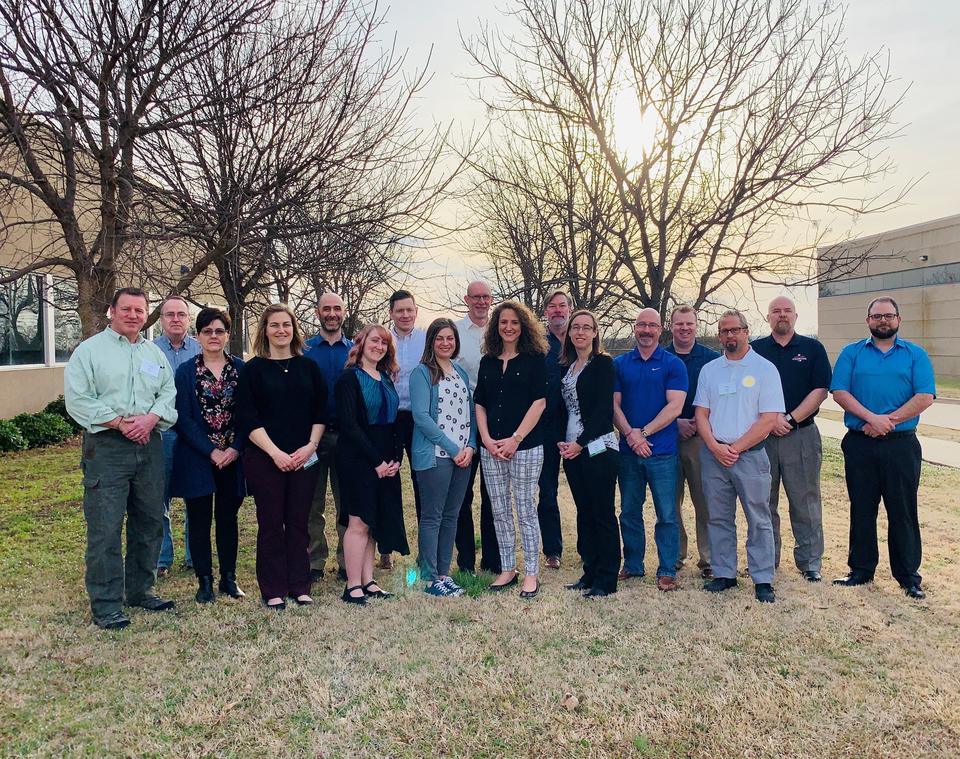Gunshot Residue Subcommittee

Officers | Members | Standards | Discipline-Specific Baseline Documents | Research & Development Needs | Presentations
The Gunshot Residue Subcommittee focuses on standards and guidelines related to the analysis of evidence that results from the deposition of or physical transfer of small or minute quantities of gunshot residue.
Participate in OSAC's Organic Gunshot Residue Inter-Laboratory Study
The Organic Gunshot Residue Task Group is looking for participants to join an inter-laboratory study on the collection and analysis of organic gunshot residues. The inter-lab study is intended to support a draft standard practice the task group has developed which contains methodologies for gas chromatography/mass spectrometry (GC/MS) and liquid chromatography/mass spectrometry (LC/MS) analyses of organic gunshot residues.
Read the invitation letter to learn more about this study and how to participate. Also, to learn more about the interest in conducting organic gunshot residue in an operational setting, please complete this brief survey.
Officers
Thomas "Rusty" White, Subcommittee Chair, Texas Department of Public Safety Crime Laboratory Services
Trevor Gillis, Subcommittee Vice Chair, Santa Clara County (California) District Attorney's Crime Laboratory
Emily Weber, Subcommittee Executive Secretary, Hamilton County (Ohio) Coroner's Office
Members
Candice Bridge, University of Central Florida
Jesse D. Brown, Defense Forensic Science Center (including U.S. Army Criminal Investigation Laboratory)
Andrew Cohen, University of Massachusetts (Human Factors Representative)
Douglas DeGaetano, Virginia Department of Forensic Science
John Drugan, Massachusetts State Police Forensic Group
David Edwards, JEOL USA, Inc.
Dana Greely, Colorado Bureau of Investigation
Monica Joshi, Ph.D., West Chester University of Pennsylvania
Debra Joslin, Ph.D., McCrone Associates
Mary Keehan, Virginia Department of Forensic Science
Michael McCarriagher, Georgia Bureau of Investigation
Elizabeth Meli, U.S. Department of Justice (Legal Representative)
Danica Ommen, Iowa State University
Koren Powers, West Virginia State Police Forensic Laboratory
Amy Reynolds, Boston Police Crime Laboratory
Nicholas Ritchie, Ph.D., National Institute of Standards and Technology
Jason Schroeder, Harris County (Texas) Institute of Forensic Sciences
Patti Williams, ANSI National Accreditation Board (Quality Representative)
J. Matney Wyatt, Defense Forensic Science Center (including U.S. Army Criminal Investigation Laboratory)
Standards
Tier 1: On the OSAC Registry
- None currently.
Tier 2: Published by an SDO
- None currently.
Tier 3: Sent to an SDO
- Standard Practice for Gunshot Residue Analysis (GSR) by Scanning Electron Microscopy/Energy Dispersive X-ray Spectrometry.
- Standard Practice for Training in the Forensic Examination of Primer Gunshot Residue (pGSR) using Scanning Electron Microscopy/Energy Dispersive X-ray Spectrometry (SEM/EDS) (ASTM WK58457).
- Reporting of Forensic Primer Gunshot Residue (pGSR) Analysis by Scanning Electron Microscopy/Energy Dispersive X-Ray Spectrometry (SEM/EDS) (ASTM WK69622).
- Standard Practice for Expert Opinions on the Interpretation of Forensic Primer Gunshot Residue (pGSR) Analysis by Scanning Electron Microscopy/Energy Dispersive X-ray Spectrometry (SEM/EDS).
- Standard Practice for the Collection, Preservation, and Analysis of Organic Gunshot Residues.
Tier 4: Under Development
- Inorganic GSR Identification.
- Collection of pGSR.
- Organic Gunshot Residue Methodology (interlaboratory study).
- pGSR Prevalence Study (research project).
Discipline-Specific Baseline Documents
The Forensic Science Standards Board (FSSB) has provided the opportunity for OSAC Subcommittees to identify baseline documents and reference materials that best reflect the current state of the practice within their respective disciplines.
These documents contain practical information regarding these disciplines that can help forensic scientists, judges, lawyers, researchers, other interested parties and the general public, to better understand the nature, scope, and foundations of the individual disciplines as they are currently practiced.
It is important to note that the identification of these documents in this venue does not represent an endorsement by OSAC or NIST. Only documents that are posted on the OSAC Registries constitute OSAC endorsement. All copyrights for these documents are reserved by their owners. Subcommittee position statements or responses to data collections by the subcommittee represent the consensus opinion of the subcommittee, not necessarily the position of the entire OSAC organization or NIST.
- Proposed Practices for Validating the Performance of Instruments Used for Automated Inorganic Gunshot Residue Analysis (May 2020).
- Gunshot Residue Compiled Bibliography (January 2017).
- SWGGSR - Guide for Primer Gunshot Residue Analysis by Scanning Electron Microscopy/Energy Dispersive X-Ray Spectrometry (2011).
- ASTM E1588-16b (2016).
- Final Report on Particle Analysis for Gunshot Residue Detection (1977).
- ENFSI BPM for GSR (ver 1.0) (2003-2011).
- ENFSI Guide for GSR (ver 2.0) (2008-2012).
- Current Methods in Forensic Gunshot Residue Analysis (2000).
- Chemical Analysis of Firearms, Ammunition, and Gunshot Residue (2008).
Research & Development Needs
- See the Research & Development Needs identified by the Gunshot Residue subcommittee.
Presentations
- None currently.
In general, the development of standards and guidelines is transitioning from the Scientific Working Groups (SWGs) to the OSAC. Some SWGs will continue to operate to provide other resources within their discipline. The existing SWG documents will remain in effect until updated documents are disseminated by the OSAC or the SWG. SWGDAM will retain the responsibility for updating the FBI DNA Quality Assurance Standards.
– Forensic Science Standards Board: March 2015

